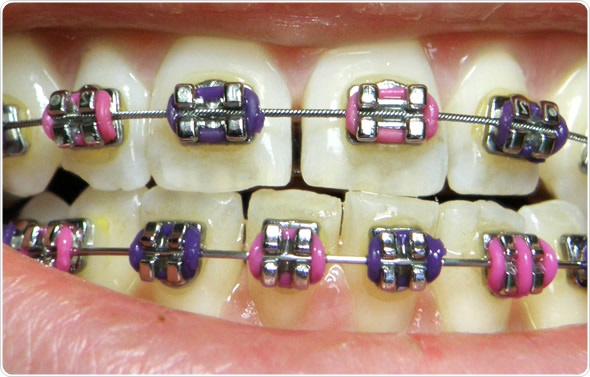Dental braces are used by dentists in orthodontic treatment for a variety of reasons. One of their most common uses, however, is in the correction of maloccluded (crooked) teeth or a bad "bite".

Malocclusion refers to when the teeth of the two jaws are poorly aligned and may be protruding over one another. While for some individuals, the problem may seem merely cosmetic and not problematic in a pathological sense, among others, malocclusion may lead to pain and difficulty in chewing or even speaking. Malocclusion may run in families or may result from injury to the teeth, thumb sucking or tooth loss.
Wearing a brace to correct malocclusion and reduce the crookedness of teeth as well as the excess space between them often results in better oral health. The realigned teeth are easier to clean as are the gums, so the risk of problems such as tooth decay, gingivitis or even tooth loss is reduced.
The braces
Traditionally, braces were uncomfortable, metal contraptions that were painful to wear and often led to injury of the inside of the mouth, causing sores and damage. Furthermore, the braces were unsightly and since braces are commonly worn by adolescents and young adults, wearing them could often lead to loss of self esteem.
Nowadays, braces are less noticeable and more inconspicuous. The brackets that attach to each tooth are smaller or may be attached to the back of the teeth where they are less visible. In addition, brackets can be made of ceramic, plastic, metals or a combination of these materials and can also be made tooth colored. In addition, brackets can be customized and shaped into "smileys" of footballs, for example.
Available in two forms, braces may be either fixed and worn at all times apart from when they are removed by a dentist or removable, in which case the patient can take them out if they want to.
Procedure for applying braces
The way in which braces should be applied is usually determined by a dentist, who assesses the state of the teeth.
There are usually three basic phases of treatment for misaligned teeth:
- The initial placement of the braces: Brackets are attached to teeth along with an arch wire and sometimes ring-like bands to hold the braces in place.
- The brace is adjusted periodically until the desired alignment is achieved. The mouth may feel sore for a few days after an adjustment or tightening.
- A retainer is worn after removal of braces to stabilize the teeth.
Most patients need to wear the braces for one to three years and it is important that good oral hygiene is maintained during this time. Brushing and flossing daily, maintaining a healthy and balanced diet and visiting the dentist regularly are all very important factors in ensuring the success of the braces.


0 Comments